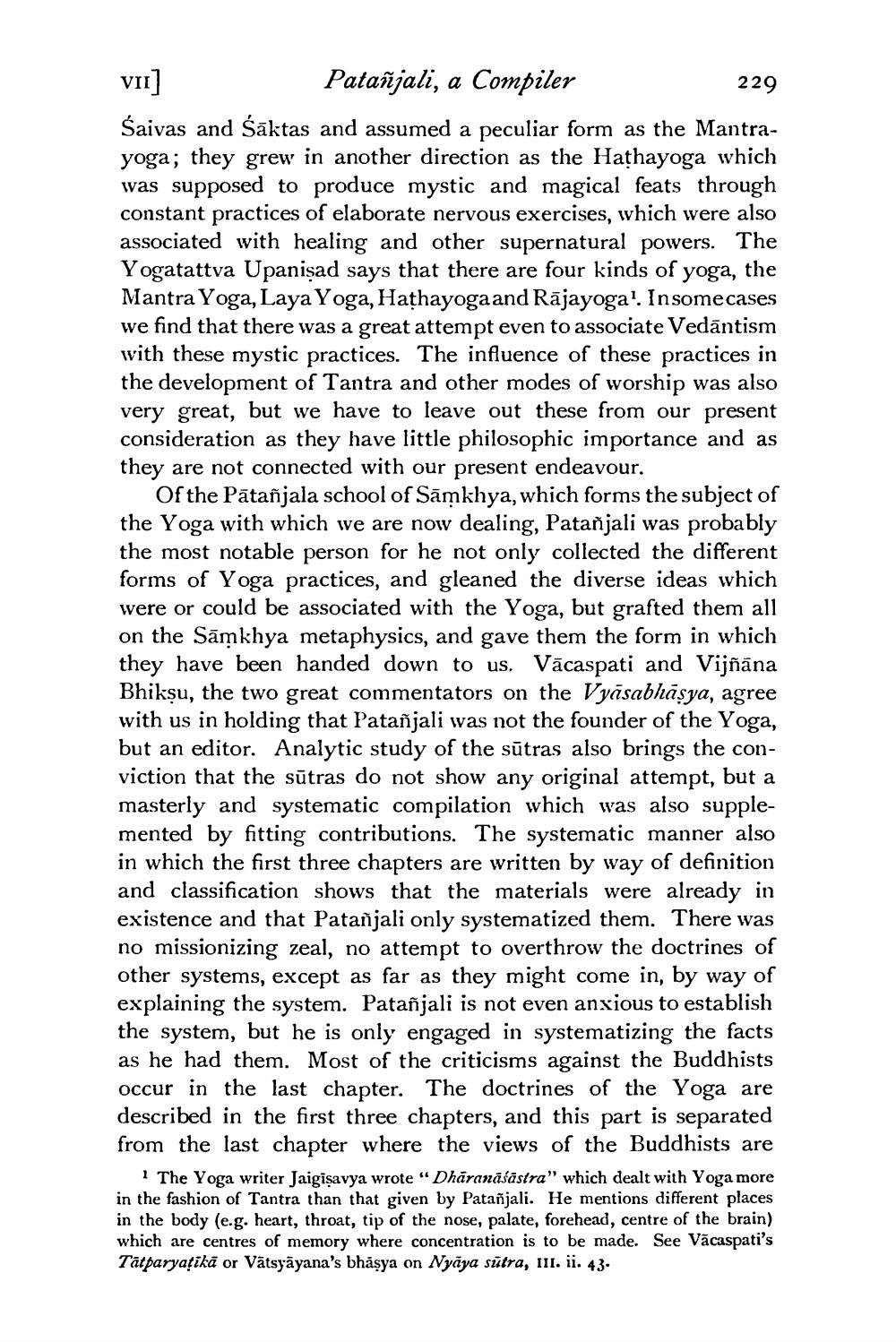________________
vii] Patañjali, a Compiler
229 Śaivas and Śāktas and assumed a peculiar form as the Mantrayoga; they grew in another direction as the Hathayoga which was supposed to produce mystic and magical feats through constant practices of elaborate nervous exercises, which were also associated with healing and other supernatural powers. The Yogatattva Upanişad says that there are four kinds of yoga, the Mantra Yoga, Laya Yoga, Hathayogaand Rājayoga! Insomecases we find that there was a great attempt even to associate Vedāntism with these mystic practices. The influence of these practices in the development of Tantra and other modes of worship was also very great, but we have to leave out these from our present consideration as they have little philosophic importance and as they are not connected with our present endeavour.
Of the Pātañjala school of Sāmkhya, which forms the subject of the Yoga with which we are now dealing, Patañjali was probably the most notable person for he not only collected the different forms of Yoga practices, and gleaned the diverse ideas which were or could be associated with the Yoga, but grafted them all on the Sāmkhya metaphysics, and gave them the form in which they have been handed down to us. Vācaspati and Vijñāna Bhikṣu, the two great commentators on the Vyasabhāsya, agree with us in holding that Patañjali was not the founder of the Yoga, but an editor. Analytic study of the sūtras also brings the conviction that the sūtras do not show any original attempt, but a masterly and systematic compilation which was also supplemented by fitting contributions. The systematic manner also in which the first three chapters are written by way of definition and classification shows that the materials were already in existence and that Patañjali only systematized them. There was no missionizing zeal, no attempt to overthrow the doctrines of other systems, except as far as they might come in, by way of explaining the system. Patañjali is not even anxious to establish the system, but he is only engaged in systematizing the facts as he had them. Most of the criticisms against the Buddhists occur in the last chapter. The doctrines of the Yoga are described in the first three chapters, and this part is separated from the last chapter where the views of the Buddhists are
1 The Yoga writer Jaigīsavya wrote “Dhāranāśāstra" which dealt with Yoga more in the fashion of Tantra than that given by Patañjali. He mentions different places in the body (e.g. heart, throat, tip of the nose, palate, forehead, centre of the brain) which are centres of memory where concentration is to be made. See Vācaspati's Tātparyaţikā or Vätsyāyana's bháşya on Nyāya sutra, ill. ii. 43.




